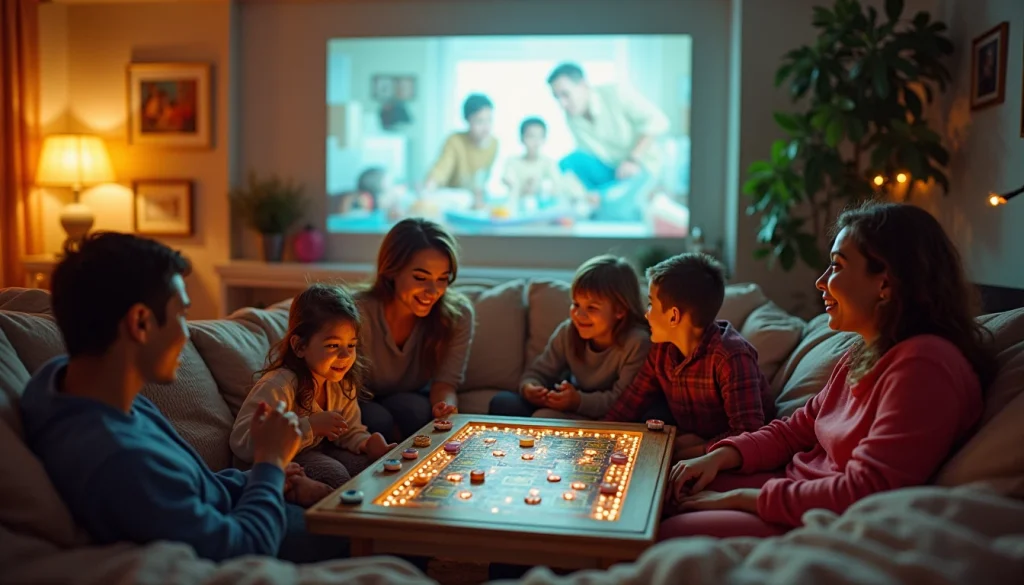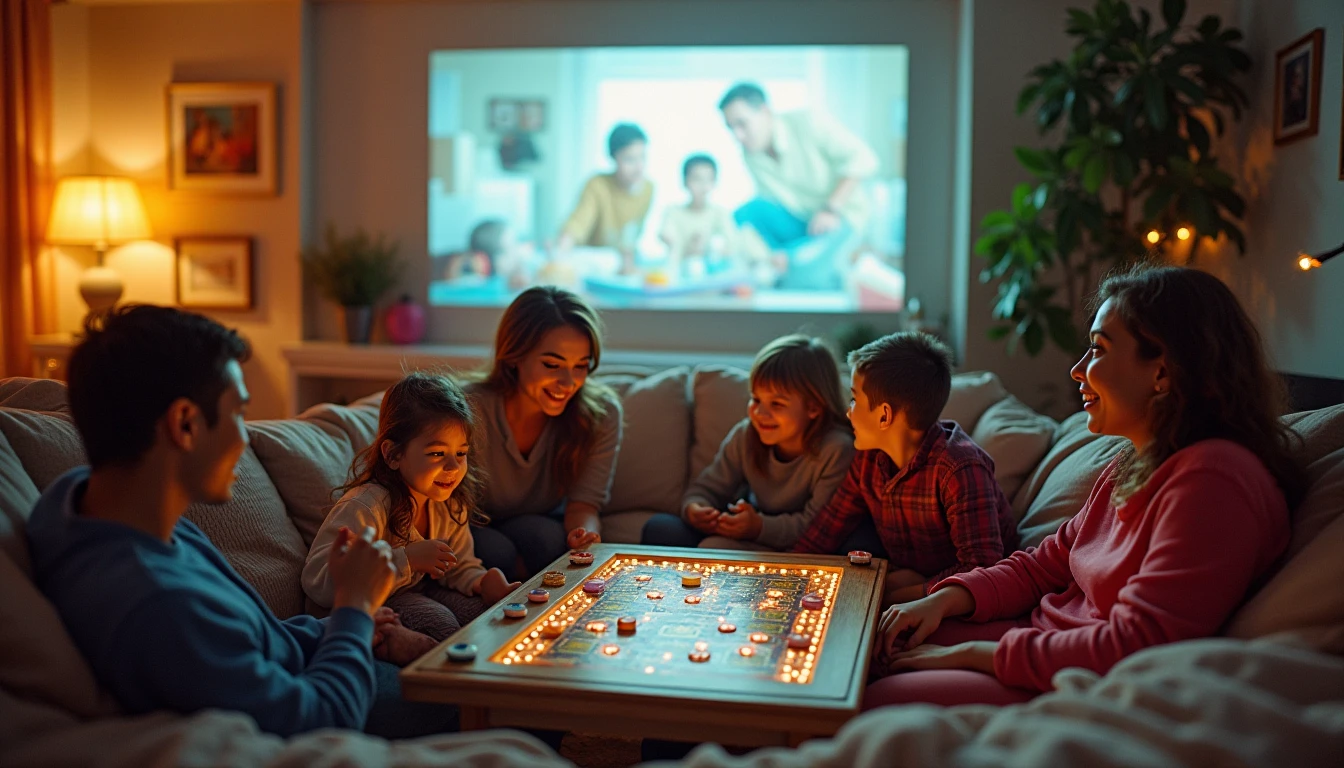The interplay between digital engagement and real-world interactions requires careful navigation to ensure children grow into well-rounded individuals who can thrive in both worlds. By understanding the nuances of this balance, families can create a harmonious environment that supports emotional, physical, and cognitive development.
Understanding the Role of Screen Time in Modern Childhood
The digital age has transformed how children interact with the world around them. Whereas previous generations spent hours outdoors or engaged in hands-on activities, today’s youth often turn to screens for entertainment, education, and social connection. While technology offers countless benefits—such as access to information, educational apps, and communication tools—it also poses potential risks if not managed properly.
Parents must recognize that screen time isn’t inherently bad; it depends on how it’s used. For instance, a child might use an educational app to practice math skills or watch a documentary about space exploration. These activities can be both enjoyable and enriching. However, excessive scrolling through social media feeds or mindlessly watching endless videos can lead to health issues.
To strike this balance, it’s essential for families to establish clear guidelines that align with their values and goals. For example, parents might decide that screen time is only allowed after completing homework or that devices are prohibited during mealtime. These rules should be flexible enough to accommodate different situations but consistent enough to provide structure.
Encouraging Offline Activities That Promote Growth
Beyond simply limiting screen time, families need to prioritize activities that foster creativity, critical thinking, and social connections. Outdoor play, arts and crafts, team sports, and face-to-face conversations all offer unique benefits that digital experiences can’t replicate. By encouraging these pursuits, parents help their children build essential life skills while staying grounded in the real world.
One effective way to promote offline engagement is by creating a schedule of “screen-free” activities. For example, families might dedicate certain days or times for outdoor adventures, board games, or family movie nights without devices. These shared experiences not only strengthen bonds between parents and children but also provide opportunities for unstructured play, which research shows is crucial for developing problem-solving abilities.
Additionally, parents can model the behavior they want to see by putting down their own phones during family time. When children observe adults prioritizing real-world interactions over digital distractions, they are more likely to follow suit. This approach sends a powerful message about valuing relationships and experiences over endless scrolling.

Setting Boundaries That Respect Individual Needs
Every child is different, so there’s no one-size-fits-all solution when it comes to managing screen time. Some kids might thrive with limited access to devices, while others benefit from using technology as a tool for learning or creativity. The key is to tailor rules and expectations to each family member’s age, interests, and developmental stage.
For younger children, strict limits are often necessary to protect their still-forming brains from excessive screen exposure. According to experts, kids under two should avoid digital media altogether, and those aged three to five should be limited to one hour per day of high-quality programming. As children grow older, parents can gradually introduce more independence while maintaining oversight to ensure they’re using devices responsibly.
At the same time, it’s important not to impose rigid restrictions that could lead to resentment or rebellion. Instead, families should work together to establish mutually agreed-upon guidelines that feel fair and realistic. For instance, older kids might earn extra screen time by completing chores, studying hard, or participating in offline activities they enjoy.
Creating a Technology-Free Zone
One effective strategy for balancing digital and analog life is designating specific areas or times where devices are completely off-limits. This approach sends a clear signal that certain spaces (like the dining table) should be reserved for face-to-face interactions rather than screen-based distractions.
For example, many families implement a “no phones at mealtimes” policy to encourage conversation and connection during shared meals. Others might set up a “device-free zone” in their living rooms where everyone must leave their screens behind when gathered together. These rules help prevent mindless scrolling while fostering meaningful family bonding.
It’s also worth considering the timing of device usage. Some parents find that restricting screen time before bedtime helps improve sleep quality and reduce conflicts at night. Others prefer designating weekends as “unplugged” days, giving children a chance to disconnect from digital distractions and focus on offline fun.
Modeling Healthy Habits for Children
Children learn by observing the behavior of the adults in their lives. When parents prioritize real-world activities, express curiosity about physical environments, and engage in active play themselves, they set an example that kids are likely to emulate.
For instance, if a family goes hiking on weekends, the children will grow accustomed to exploring nature and appreciating the outdoors rather than staying indoors glued to screens. Similarly, if parents make time for creative projects or sports, their kids may develop similar interests and skills.
In addition, modeling appropriate device use is crucial for teaching boundaries and self-regulation. Parents should demonstrate how to manage their own screen time effectively, such as turning off notifications during family time or avoiding excessive social media consumption. By role-modeling these behaviors, they help children internalize the importance of balancing digital and analog life.
Encouraging Mindful Consumption of Digital Content
When it comes to screen time, it’s not just about quantity but also quality. Parents should guide their children toward selecting apps, games, and shows that align with their values and promote positive outcomes like learning, creativity, or social connection.
For example, educational apps can be a valuable resource for reinforcing school concepts or sparking curiosity about new topics. Similarly, video content that features role models exhibiting kindness, resilience, or problem-solving skills can inspire children to emulate these traits in their own lives.
However, parents must also be vigilant about monitoring what kids are consuming online. This means setting parental controls, reviewing content ratings, and having open conversations with children about the material they’re exposed to. By fostering media literacy and critical thinking, families can empower their kids to make informed choices about what they watch or play.
Fostering a Balanced Lifestyle
Ultimately, the goal is to create a lifestyle where both screen time and offline activities have their place without one overwhelming the other. This balance isn’t just about managing devices but also nurturing holistic well-being across all areas of life.
Parents can achieve this by promoting an overall sense of purpose and fulfillment that extends beyond digital engagement. Encouraging kids to pursue hobbies, volunteer work, or creative projects gives them a sense of identity and belonging outside the virtual world. It also helps build resilience against potential pitfalls like addiction or isolation that can arise from overusing technology.
At the same time, families should remain flexible in adapting their strategies as new challenges emerge. The digital landscape is constantly evolving, so staying open to change while maintaining core principles will be key to raising children who are prepared for a rapidly changing world.

